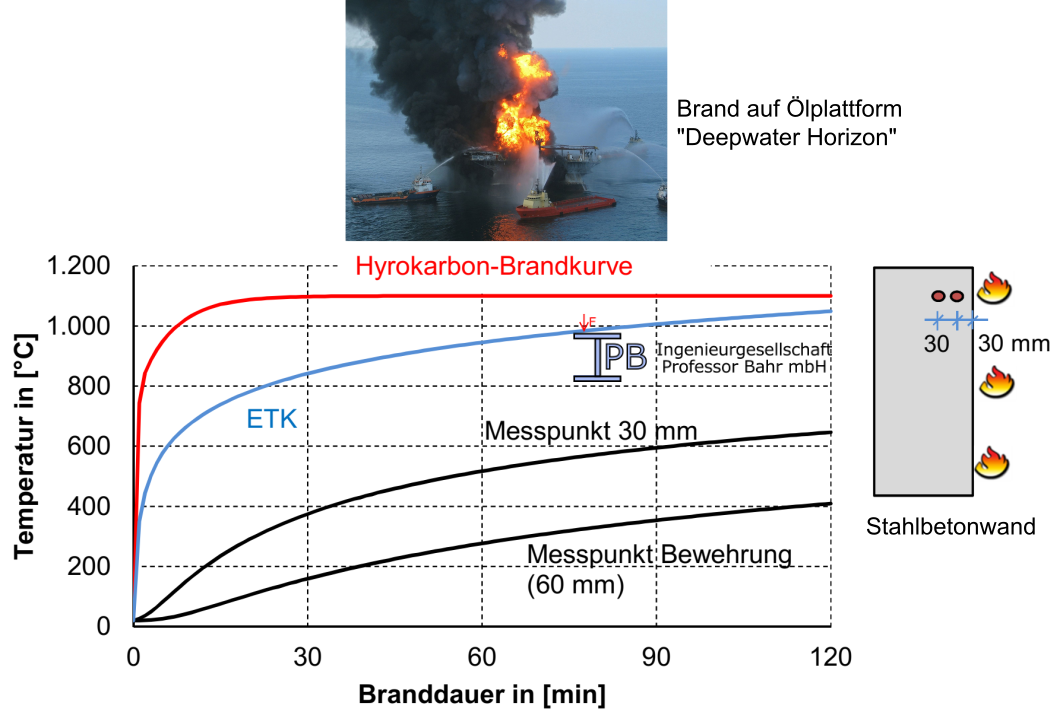The hydrocarbon fire curve according to EN 1991-1-2
Scope of application of the hydrocarbon fire curve
Compared to the ISO standard fire commonly used in construction, the hydrocarbon fire curve is characterized by even higher fire room temperatures (see picture below). This applies in particular to the beginning of the fire since the temperatures rise much faster. With longer fire durations of more than 120 minutes, both the hydrocarbon fire curve and the ISO standard fire reach temperatures of more than 1100°C.
The hydrocarbon fire curve is used when there is a risk of liquid fires, e.g. in industrial plants (chemicals), on ships, pontoons, oil platforms, road and railway tunnels as well as for petrol and diesel pool fires. Further information is also available in the publication "Fire curves for the structural fire protection of road tunnels" (in German) of the Federal Highway Research Institute.

Simplified proof of fire protection with the hydrocarbon fire curve?
The "hot" Eurocodes EN1992-1-2 (concrete construction), EN1993-1-2 (steel construction), EN1994-1-2 (composite construction) and EN1995-1-2 (timber construction) sometimes provide simplified design tables for common cross-section types. These are each based on the ISO standard fire. Therefore, the application of these design tables is not permissible.
How I can help you.
For structural members exposed to hydrocarbon fire, a design with special programs for the fire design is available, which I can create for you at short notice. The documentation of the fire design contains the essential information on the heating of the cross-section, the fire resistance duration of the member and its deformations. Other services can of course be provided in consultation with you.
In the figure above you can see an example of a one-sided temperature exposure on a reinforced concrete wall as a result of the hydrocarbon fire curve. The figure makes clear that with a sufficiently selected concrete cover, high fire resistance classes are possible.